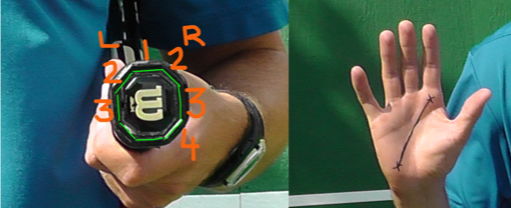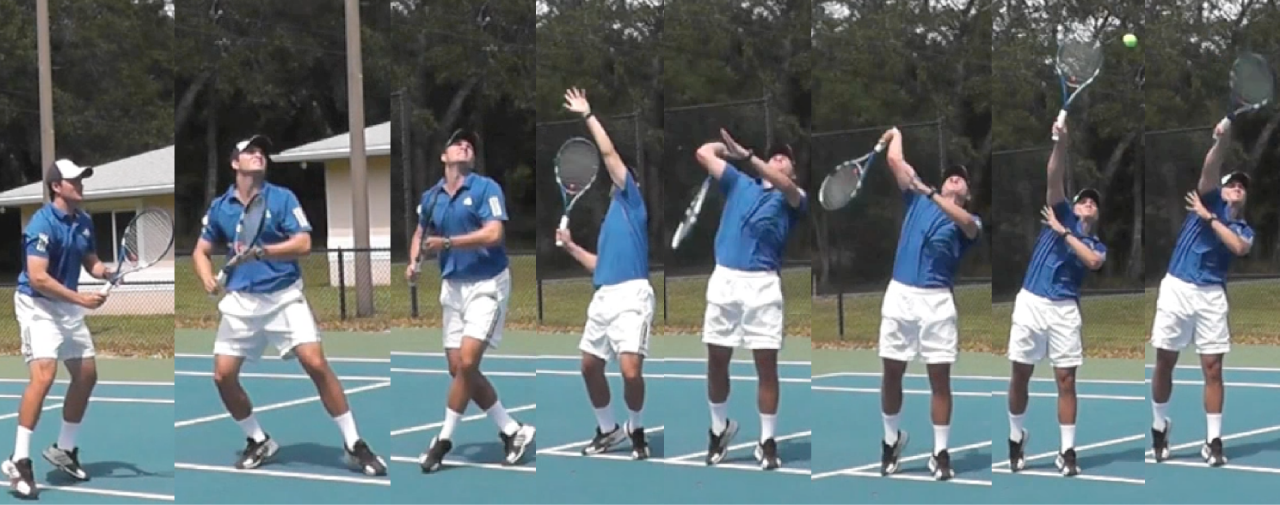The Overhead
The overhead is an abbreviated serve.
The Grip
You should use a continental (2) grip. It will help you generate spin so that you can swing fast and swing up.

Most people are afraid to come to net because they either don’t trust their volleys or they don’t want to be lobbed. In order to be comfortable at the net it’s important to have an efficient reliable overhead.

Swing
As mentioned earlier the overhead is an abbreviated serve. It’s important to train the correct motor program. Start in the ready position as if you ready for a volley, you change your grip to 2 and you set the racquet in the in salute position using your left hand to set the racquet face angled downward, with the string bed facing you. From here:
1. Comb your hair (With hand far away from your head)
The racquet comes in between your ear and your elbow, maintaining a 90- degree angle between your forearm and upper arm.
2. Talk on the telephone.
Your elbow and hand position resemble the position you would hold a telephone.
3. Karate chop
Swing up on edge
4. High five the giant.
Swing up and pronate
5. Make the letter X
Help coordinate the arms so the left hand stays up
You swing up more to the contact point with the overhead compared to the serve in order to overcome the downward trajectory of the falling lob.

Body
You want to load your body weight on your back foot so that it helps you turn more as you rotate your shoulders back. The power is initiated from the ground up.
1. The knees turn in. As they stop the hips speed up
2. The hips turn in. As they stop the shoulders speed up
3. The shoulders turn in. As they stop the arm speeds up
4. The arm straightens. As it straightens, the forearm pronates, the hand and racquet speed up
Ideally at the point of contact your body should be in a straight line, at a 45 degree angle into the court and 45 degrees to the right (left for lefty). This is known as your power-line. Your shoulders should be facing the net-post to the right ie. 45 degrees away from your target. Eyes should be focused at the point of contact to help prevent the body and head from shifting and opening up.
